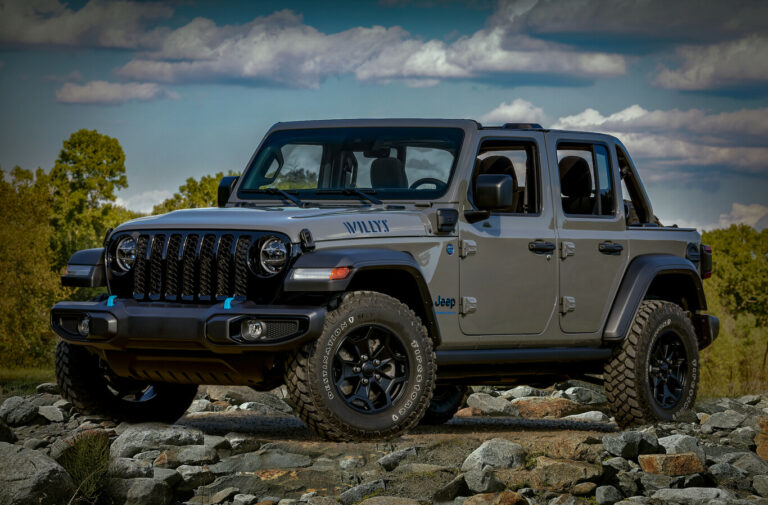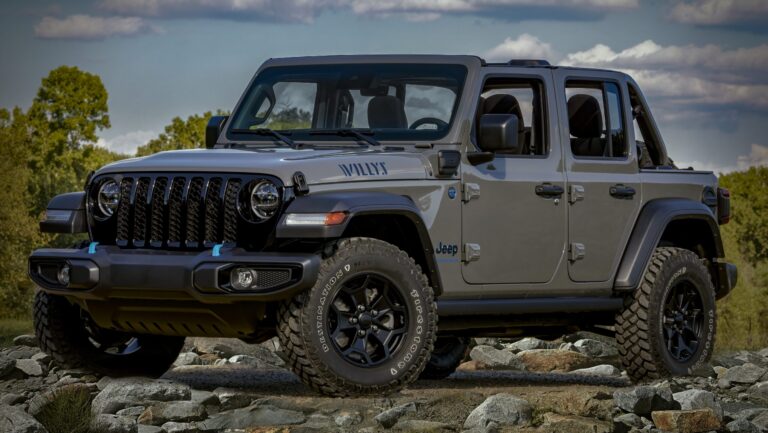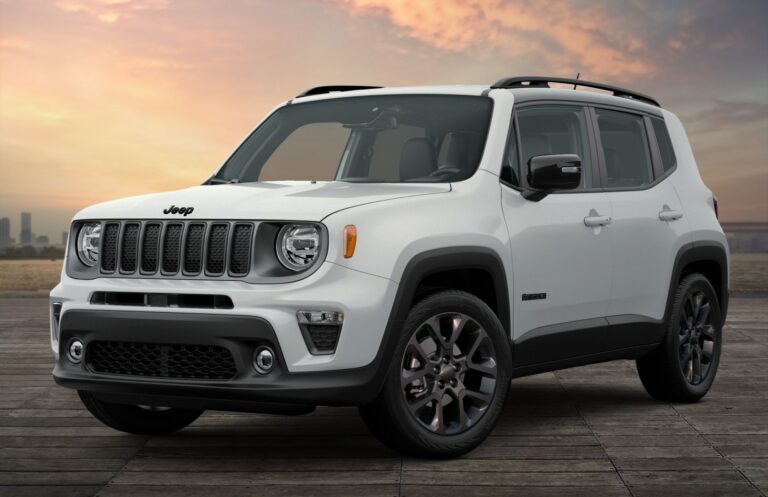1993 Jeep YJ For Sale: Your Comprehensive Guide to Owning a Classic Square-Headlight Icon
1993 Jeep YJ For Sale: Your Comprehensive Guide to Owning a Classic Square-Headlight Icon jeeps.truckstrend.com
The open road, the call of the wild, and the unmistakable silhouette of a Jeep – for many, this is the essence of freedom. Among the pantheon of iconic off-roaders, the Jeep YJ Wrangler holds a special, sometimes polarizing, place. And for those in the know, a "1993 Jeep YJ for sale" isn’t just a classified ad; it’s an invitation to own a piece of automotive history, a rugged machine that bridges the gap between the utilitarian CJ and the more refined TJ.
The 1993 YJ represents a sweet spot in the YJ’s production run (1987-1995). It’s one of the later models, benefiting from years of refinements and standardizing the beloved 4.0-liter High Output (HO) inline-six engine, while still retaining the distinctive square headlights and leaf-spring suspension that define the YJ era. If you’re considering diving into the world of classic Jeep ownership, understanding what makes the 1993 YJ tick, what to look for, and what to expect is paramount. This comprehensive guide aims to equip you with the knowledge needed to confidently navigate the market for a 1993 Jeep YJ.
1993 Jeep YJ For Sale: Your Comprehensive Guide to Owning a Classic Square-Headlight Icon
The Allure of the 1993 Jeep YJ: A Snapshot in Time
The Jeep YJ Wrangler, produced from 1987 to 1995, was the first Wrangler model, succeeding the long-running CJ series. While it initially faced skepticism from purists for its departure from the CJ’s round headlights (a design choice driven by safety regulations and modern aesthetics at the time), the YJ quickly carved out its own niche. It retained the CJ’s rugged body-on-frame construction, solid axles, and removable doors and top, but introduced a wider stance, a more comfortable interior, and improved on-road handling thanks to its leaf-spring suspension system.
The 1993 model year, in particular, is significant. By this point, the YJ had matured. Most 1993 YJs came equipped with the legendary 4.0L High Output (HO) inline-six engine, known for its bulletproof reliability, ample low-end torque, and ease of maintenance. This engine, paired with either a five-speed manual (AX-15) or a three-speed automatic transmission (32RH), offers a robust powertrain capable of handling both daily driving and serious off-road adventures. For those seeking maximum fuel economy (relatively speaking) or a simpler engine, the 2.5L four-cylinder was also available.
What truly sets the 1993 YJ apart today is its blend of classic charm and mechanical simplicity. It’s old enough to feel like a true classic, with minimal electronics and an emphasis on mechanical components, making it a dream for DIY enthusiasts. Yet, it’s new enough that parts are still widely available and its design is distinctly modern compared to its CJ predecessors. For many, the square headlights are no longer a point of contention but a unique identifier, making the YJ a cult classic and a rising star in the vintage 4×4 market.
What to Look For When Buying a 1993 Jeep YJ
Purchasing a vehicle that’s three decades old requires a thorough inspection. YJs are tough, but time and neglect can take their toll. Here’s a detailed breakdown of critical areas to examine:
1. The Rust Monster: Your Primary Concern
Rust is the Achilles’ heel of the YJ. These vehicles were not extensively rust-proofed from the factory, and their body-on-frame design, combined with exposure to road salt and moisture, makes them highly susceptible.

- Frame: This is paramount. Pay close attention to the rear sections, especially around the shackle mounts, skid plate areas, and where the frame rails kick up over the rear axle. Also, inspect the front frame horns and spring perches. Minor surface rust is manageable; extensive rot is a deal-breaker unless you’re planning a full frame-off restoration.
- Body: Check the rocker panels (under the doors), the floorboards (lift the carpet!), the cowl area (where the windshield meets the hood), and the wheel wells. Rust in these areas can be costly to repair.
- Tub: Look under the rear seats and in the cargo area. Drain plugs are often removed, allowing water to sit and cause rust.

2. Engine: 2.5L vs. 4.0L HO
- 4.0L High Output (HO): This is the more desirable engine. Listen for any knocking, ticking, or excessive smoke (blue indicates oil burning, black indicates rich fuel, white indicates coolant). Check for oil leaks (rear main seal is common), coolant leaks, and listen for a smooth idle. Ensure the check engine light (CEL) is not on.
- 2.5L (Four-Cylinder): A reliable, albeit less powerful, engine. Similar checks for leaks and unusual noises apply. It’s adequate for light use but will feel underpowered on the highway.
- General Engine Health: Check the oil and coolant for proper levels and condition. Look for signs of overheating (discolored coolant, warped cylinder head).

3. Transmission and Transfer Case
- Manual Transmission (AX-5 for 2.5L, AX-15 for 4.0L): Test all gears, including reverse. Look for smooth engagement, no grinding, and a firm clutch pedal. Listen for any bearing noises.
- Automatic Transmission (32RH): Ensure smooth shifts and no slipping. Check the fluid condition (should be red, not brown or burnt-smelling).
- Transfer Case (NP231 Command-Trac): Engage 2H, 4H, and 4L. The lever should move smoothly, and the system should engage without grinding. Drive in 4H (on a loose surface only) to ensure it works. Check for leaks around the seals.
4. Axles, Suspension, and Steering
- Axles (Dana 30 front, Dana 35 rear standard): Check for fluid leaks around the differential covers and axle seals. Listen for any howling or grinding noises from the differentials or wheel bearings during a test drive.
- Suspension (Leaf Springs): Inspect the leaf springs for sagging, broken leaves, or excessive rust. Check all bushings and shackles for wear. Look at the shocks – are they leaking or original?
- Steering: Check for excessive play in the steering wheel. This could indicate worn tie rod ends, ball joints, a loose steering box, or a worn steering shaft.
5. Electrical and Interior
- Electrical: Test all lights (headlights, taillights, turn signals, brake lights), wipers, horn, heater/AC (if equipped and present), and all dashboard gauges. Wiring issues can be frustrating.
- Interior: Assess the condition of the seats, dashboard (prone to cracking), carpet, and door panels. Does it have a soft top or hard top? Check its condition for rips, tears, or cracks. Water leaks are common.
6. Modifications
Many YJs have been modified. Assess the quality of any aftermarket parts or lifts. Poorly installed lifts can cause driveline vibrations or alignment issues. Oversized tires can strain the stock axles and steering components.
The Value Proposition: Why Invest in a 1993 YJ?
Owning a 1993 Jeep YJ is more than just having a vehicle; it’s a lifestyle choice with several compelling benefits:
- Affordability: Compared to newer Wranglers, YJs are significantly more affordable, making them an excellent entry point into the Jeep world.
- Simplicity and DIY-Friendly: With fewer complex electronics, the YJ is renowned for its mechanical simplicity. Most repairs and upgrades can be tackled by a competent DIY mechanic, saving significant labor costs.
- Classic Status & Potential Appreciation: As the YJ ages, its unique design and robust build quality are gaining recognition. Well-maintained or restored YJs are beginning to appreciate in value, making them a potential investment.
- Unmatched Customization Potential: The aftermarket support for YJs is immense. From lift kits and bigger tires to engine swaps and interior upgrades, you can truly make a YJ your own.
- Off-Road Prowess: Despite its age, a properly set up YJ remains an incredibly capable off-road machine, ready to tackle trails that would leave many modern SUVs stranded.
- The "Jeep Wave" & Community: Owning a YJ connects you to a vibrant and welcoming community of fellow Jeep enthusiasts.
- Pure Fun: The open-air driving experience with the top and doors off is exhilarating and truly unique to a vehicle like the Wrangler.
Finding Your Perfect 1993 Jeep YJ: Where to Look
- Online Marketplaces: Websites like Craigslist, Facebook Marketplace, and eBay Motors are prime hunting grounds. Be prepared to filter through many listings and travel to inspect vehicles.
- Specialized Jeep Forums & Classifieds: Forums dedicated to Jeeps (e.g., JeepForum.com, WranglerForum.com) often have classified sections where enthusiasts sell their well-maintained vehicles.
- Local Car Dealers (Used Car Lots): Less common for older YJs, but occasionally one might pop up. These are often traded in and may be priced higher.
- Auto Auctions: Can be a source for great deals, but also higher risk as you typically can’t thoroughly inspect the vehicle beforehand.
- Word-of-Mouth: Let friends, family, and local mechanics know you’re looking. Sometimes the best deals are found through personal connections.
Always remember: patience is key. The right YJ for you might not be the first one you see.
Post-Purchase Considerations and Ownership Tips
Congratulations on your 1993 YJ! Here’s what to consider next:
- Baseline Maintenance: Even if the seller claims recent work, it’s wise to change all fluids (engine oil, transmission, transfer case, differentials), spark plugs, air filter, and fuel filter. Inspect belts and hoses.
- Address Known Issues: Prioritize fixing any significant rust, fluid leaks, or mechanical issues identified during the pre-purchase inspection.
- Safety First: Ensure all lights work, brakes are in top condition, and tires have good tread. Consider upgrading to a proper roll bar if you plan on serious off-roading.
- Common Upgrades: Many YJ owners opt for a modest lift kit, larger all-terrain or mud-terrain tires, and upgraded bumpers for enhanced off-road capability and aesthetics.
- Join the Community: Connect with local Jeep clubs or online forums. They are invaluable resources for technical advice, trail buddies, and social events.
- Regular Maintenance: YJs are robust, but they thrive on regular fluid changes, greasing of components, and addressing minor issues before they become major problems.
- Embrace the Character: YJs are not luxury vehicles. They are loud, sometimes leaky, and certainly not the smoothest ride. But that’s part of their charm. Embrace their rugged simplicity and enjoy the unique driving experience.
Price Table: Estimated 1993 Jeep YJ Market Value
It’s important to note that prices for vintage vehicles like the 1993 Jeep YJ can vary significantly based on condition, mileage, modifications, engine type, geographic location, and current market demand. This table provides a general range:
| Condition Category | Description | Estimated Price Range (USD) | Key Factors Influencing Price |
|---|---|---|---|
| Project/Parts | Significant rust (frame/body), major mechanical issues, non-running, incomplete. Requires extensive work. | $1,500 – $4,000 | Extent of rust, engine/transmission condition, completeness, title status, availability of key components. |
| Daily Driver | Runs and drives reliably, functional but likely has cosmetic flaws, moderate surface rust, some minor mechanical issues. | $4,000 – $8,000 | Engine type (4.0L typically higher), mileage, functional accessories (AC), minor rust spots, minor mechanical needs, soft top. |
| Good Condition | Well-maintained, minimal to no significant rust, solid mechanicals, presentable interior/exterior, may have tasteful mods. | $8,000 – $15,000 | Originality vs. quality of modifications, 4.0L engine, lower mileage, limited rust, presence of hardtop, working AC, recent major service. |
| Excellent/Show | Meticulously restored or exceptionally well-preserved original, no significant rust, perfect mechanics, low miles. | $15,000 – $30,000+ | Documented restoration, original parts, very low documented mileage, rare factory options (e.g., Dana 44 axles), specific collector appeal. |
Disclaimer: These are general estimates. Always conduct a thorough pre-purchase inspection or hire a professional inspector before making a purchase decision.
Frequently Asked Questions (FAQ) about the 1993 Jeep YJ
Q1: Is the 1993 Jeep YJ reliable?
A1: Yes, generally. The 4.0L inline-six engine is legendary for its reliability and longevity. The mechanical simplicity means fewer electronic components to fail. However, like any 30-year-old vehicle, regular maintenance is crucial, and components will eventually wear out.
Q2: What’s the main difference between the 2.5L and 4.0L engine in a YJ?
A2: The 4.0L High Output (HO) inline-six is significantly more powerful (around 180 hp vs. 120 hp for the 2.5L), offering much better acceleration and highway performance, especially with larger tires. The 2.5L is more fuel-efficient but can feel underpowered. For serious off-roading or highway driving, the 4.0L is highly recommended.
Q3: Are parts hard to find for a 1993 YJ?
A3: No, not at all. Due to the YJ’s popularity and the widespread use of many of its components (especially the 4.0L engine which continued into the TJ and XJ), aftermarket support is excellent, and many OEM replacement parts are still available.
Q4: How much rust is too much when buying a YJ?
A4: Any significant rust on the frame that compromises its structural integrity is generally too much, as it’s costly and difficult to repair properly. Surface rust on the body is manageable, but perforating rust on floorboards or rocker panels will require welding and bodywork. Prioritize a solid frame above all else.
Q5: Can I daily drive a 1993 YJ?
A5: Yes, many people daily drive their YJs. However, be prepared for a less refined ride than modern vehicles. They can be noisy, the ride is firm (especially with leaf springs), and fuel economy isn’t great. They are reliable enough for daily use if well-maintained.
Q6: What kind of fuel economy does a 1993 YJ get?
A6: Expect around 15-18 MPG for a 4.0L YJ with stock tires and gearing, less if it’s lifted with larger tires. The 2.5L might get slightly better, around 18-20 MPG. These figures are highly dependent on driving style and vehicle condition.
Q7: Is a 1993 YJ a good first off-roader?
A7: Absolutely! Its robust construction, solid axles, simple mechanics, and vast aftermarket support make it an excellent platform for learning off-roading. They are very capable and forgiving vehicles.
Q8: What’s the deal with the square headlights?
A8: The square headlights were a design choice by AMC (American Motors Corporation, then owner of Jeep) to modernize the Wrangler and differentiate it from the older CJ series. While initially controversial among purists, they have become a distinctive and beloved feature of the YJ, making it instantly recognizable.
Conclusion
The 1993 Jeep YJ stands as a testament to rugged simplicity and enduring adventure. It offers a unique blend of classic appeal, off-road capability, and a relatively straightforward ownership experience. While the hunt for the perfect YJ requires diligence, particularly in assessing for rust, the reward is a vehicle that delivers unparalleled open-air freedom and a strong connection to a passionate community. Whether you’re looking for a weekend trail rig, a fun summer cruiser, or a project to personalize, a well-chosen 1993 Jeep YJ is more than just a car – it’s an invitation to a lifestyle. Happy hunting, and may your square-headlight adventures be legendary!





